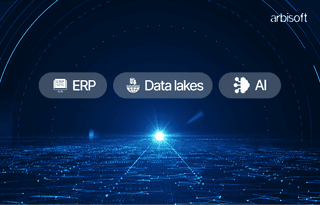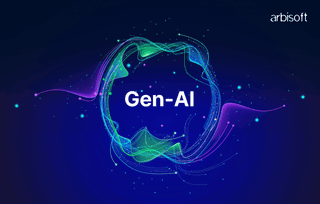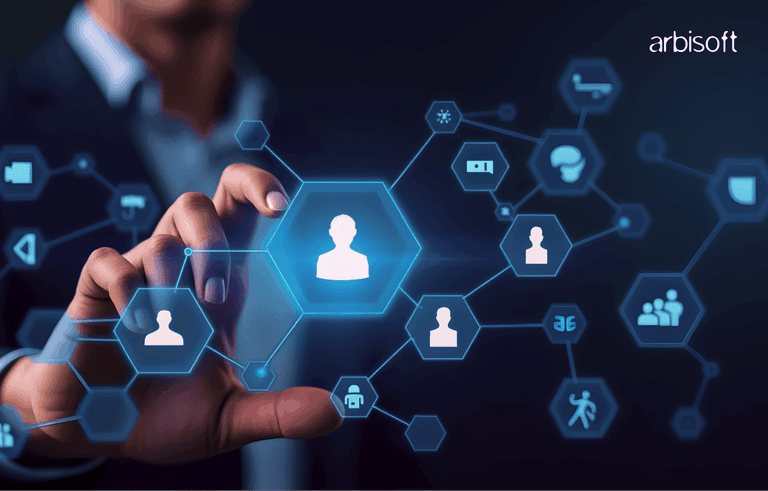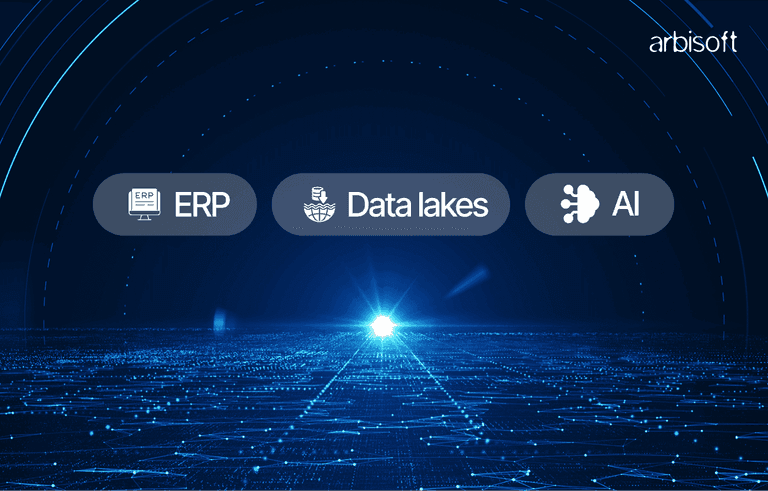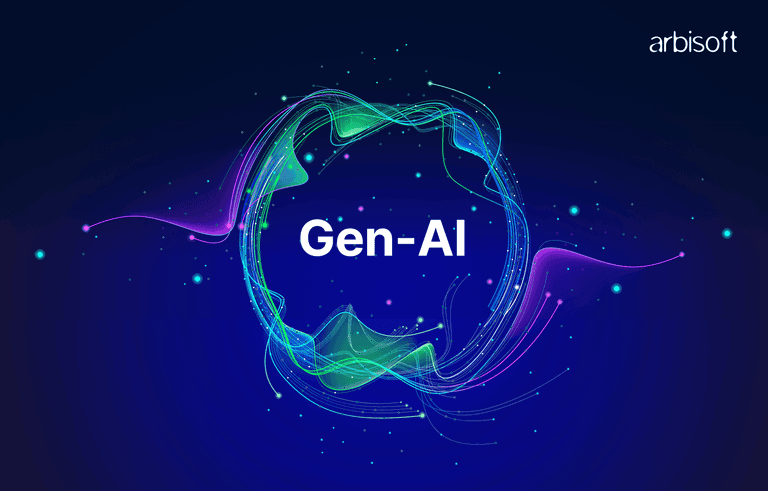We put excellence, value and quality above all - and it shows




A Technology Partnership That Goes Beyond Code

“Arbisoft has been my most trusted technology partner for now over 15 years. Arbisoft has very unique methods of recruiting and training, and the results demonstrate that. They have great teams, great positive attitudes and great communication.”
LlamaCon 2025: Inside Meta’s First AI Developer Event

Meta Hosts Its First AI Developer Event: LlamaCon 2025
On Tuesday, April 29, 2025, Meta held its first-ever developer event focused entirely on AI, called LlamaCon. The event took place at Meta’s headquarters in Menlo Park, California. It was all about Llama, Meta’s family of open-source AI models. LlamaCon gave developers a chance to learn more about these models, see what Meta has been working on, and connect with other people in the tech world. The event was also streamed online so that people around the world could watch the sessions, keynotes, and big announcements.
So, What Is LlamaCon?
LlamaCon is Meta’s first official developer event focused on its Llama models, which stands for Large Language Model Meta AI. These models are designed to help build smart AI tools and apps, and Meta wants them to be open-source, meaning anyone can use them freely.
The purpose of the event was to:
- Share the latest updates about Meta’s Llama models
- Talk about Meta’s plans for open-source AI
- Let developers see how they can use Llama models to build new AI applications
- Introduce new tools and resources for developers
Speakers from Meta and other leading tech companies were also part of the sessions, making it a well-rounded event.
Key Sessions and Highlights from LlamaCon 2025

Image source: LinkedIn
10:15 a.m. PT: Opening Keynote
The event started with a keynote speech by three important leaders from Meta:
- Chris Cox, Chief Product Officer
- Manohar Paluri, Vice President of AI
- Angela Fan, Generative AI Research Scientist
They spoke about Meta’s vision for the future of AI and shared important details about the new Llama 4 models. They explained how developers can use these models to build smarter and more useful AI applications; an approach that closely aligns with the kind of innovative artificial intelligence solutions driving today’s tech advancements. The keynote also focused on Meta’s goal to make AI open and available to everyone, not just big companies.
10:45 a.m. PT: Fireside Chat: Mark Zuckerberg & Ali Ghodsi
Next came a fireside chat between Mark Zuckerberg, CEO of Meta, and Ali Ghodsi, CEO of Databricks, a company that works on AI and big data. In this chat, they discussed:
- Why open-source AI is important for innovation and progress
- The technical and practical challenges developers face while working with AI
- How AI can be used in different industries like healthcare and education
This chat was especially interesting because Meta recently became a strategic investor in Databricks, showing that they’re serious about growing their presence in the AI and data space.
4:00 p.m. PT: Fireside Chat: Mark Zuckerberg & Satya Nadella
Later in the day, there was another fireside chat featuring Mark Zuckerberg and Satya Nadella, CEO of Microsoft. Their discussion covered:
- The newest trends in AI development
- The difference between open-source models and closed (proprietary) AI models
- How developers can stay up to date in the fast-moving AI industry
This conversation was very valuable because Microsoft works closely with OpenAI, and Satya Nadella offered great insights into the future of AI and how developers can prepare for what’s coming next.
Why LlamaCon Matters for Meta
This event was an important moment for Meta, especially after the recent launch of Llama 4, the newest version of its AI model. While Meta hoped it would impress the developer community, the response was mixed.
Challenges with Llama 4
Even though Llama 4 showed some improvements, it didn’t perform as well as models from other big companies like:
These companies’ models scored better on several AI performance tests. As a result, some developers were not fully satisfied with Meta’s new model.
Benchmarking Controversy
Another issue Meta faced was criticism related to benchmarking results. After launching Llama 4, Meta claimed strong results on a popular AI benchmark called LM Arena. However, it turned out that they used a special version of the model called Llama 4 Maverick for the test. This version wasn’t the same as the one made available to the public.
This caused confusion and concern in the developer community. Meta later explained that the Maverick model was just an experimental version, not meant for wide use. Still, the incident created pressure on Meta to prove the quality and honesty of its AI models.
New Tools and Announcements from LlamaCon
LlamaCon wasn’t just about talks, it also included some big announcements, especially for developers looking to build with AI.
Meta AI App
One of the biggest surprises was the launch of the new Meta AI app, a standalone app available on both iOS and Android.
The app gives users direct access to Meta’s AI assistant, and it includes features like:
- A “Discover” feed where people can browse public conversations and prompts
- Voice chat mode for hands-free interaction with the assistant
- Personalized results when connected to a Facebook or Instagram account
This move brings Meta AI beyond social platforms and into its own space, giving users a dedicated tool to interact with Llama-powered intelligence on the go.
Llama API
Meta launched a new Llama API, which allows developers to:
- Access both Llama 3 and Llama 4 models
- Use the models for tasks like chatting, summarizing text, writing code, and more
- Integrate the models into their own software to improve features like search, messaging, and recommendations
This API is flexible enough to support both research and business use cases. That means whether you're working on a personal project or building something for a large company, the Llama API can help.
Meta AI Assistant
Meta also introduced updates to its Meta AI Assistant, which now works across platforms like, Facebook, Instagram, WhatsApp and Messenger. This AI assistant uses Llama 4 to help users do things like:
- Write messages
- Answer questions
- Find information quickly and easily
These updates show that Meta wants to bring AI into everyday tools, not just for developers, but for regular users as well.
How to Watch LlamaCon
If you missed the event or want to watch it again, you can find the full recordings of all sessions, keynotes, and fireside chats on:
- The Meta for Developers Facebook Page
- The Meta Developers YouTube Channel
This makes it easy for developers, students, and tech enthusiasts around the world to catch up on everything shared at LlamaCon.
Different Views on LlamaCon
While LlamaCon helped Meta showcase its work in AI, not everyone was fully impressed. Some people believe Meta is trying to catch up with other leading companies rather than leading the way in AI.
Critics say that even though the company talks a lot about open-source AI, its Llama 4 models don’t yet match the performance of advanced tools from OpenAI, Google, or Anthropic. They feel Meta’s focus on accessibility and openness is smart in the long run, but for now, it may seem like Meta is playing catch-up instead of pushing the industry forward.
What’s Next for Meta and Llama?
LlamaCon 2025 was an important milestone for Meta. It showed that the company is serious about AI and wants to support developers through open tools and partnerships. Even though Llama 4 didn’t get the best reviews, Meta proved that it is committed to improving and competing in the world of AI.
By working with companies like Databricks and Microsoft, Meta is building strong relationships that could help it grow in the future. As developers explore the tools launched at LlamaCon, they’ll be paying close attention to how Meta’s models evolve over time.
For now, LlamaCon sent a clear message: Open-source AI is here to stay, and Meta wants to be a big part of that movement.
FAQs
1. What big announcements were made at LlamaCon 2025?
At LlamaCon 2025, Meta introduced the Llama API, which allows developers to use Llama 3 and Llama 4 models for building AI apps. They also shared updates to the Meta AI Assistant, which now works across platforms like Facebook and Instagram to help users with tasks like writing messages and finding content.
2. What problems did Meta face with Llama 4 models?
Meta’s Llama 4 models didn’t perform as well as other popular models, like GPT-4 or Google’s Gemini. There was also controversy about Meta using an experimental version of Llama 4 in AI tests, which caused confusion among developers.
3. What is Meta’s plan for open-source AI?
At LlamaCon, Meta emphasized that they want to make their AI tools available for free to developers. This open-source approach means anyone can use Meta's Llama models to create new AI apps, rather than relying on paid models from other companies.
4. What partnerships did Meta highlight at LlamaCon?
During the event, Meta talked about its growing partnerships, like with Microsoft and Databricks. These partnerships are important for sharing knowledge and working together to build better AI tools.
5. Why didn’t Llama 4 get as much attention as Meta hoped?
While Llama 4 was an important release, it didn’t excite many developers. Some felt that Meta’s models didn’t perform as well as those from companies like OpenAI or Google. Many saw it as Meta trying to catch up, rather than leading the way in AI.









